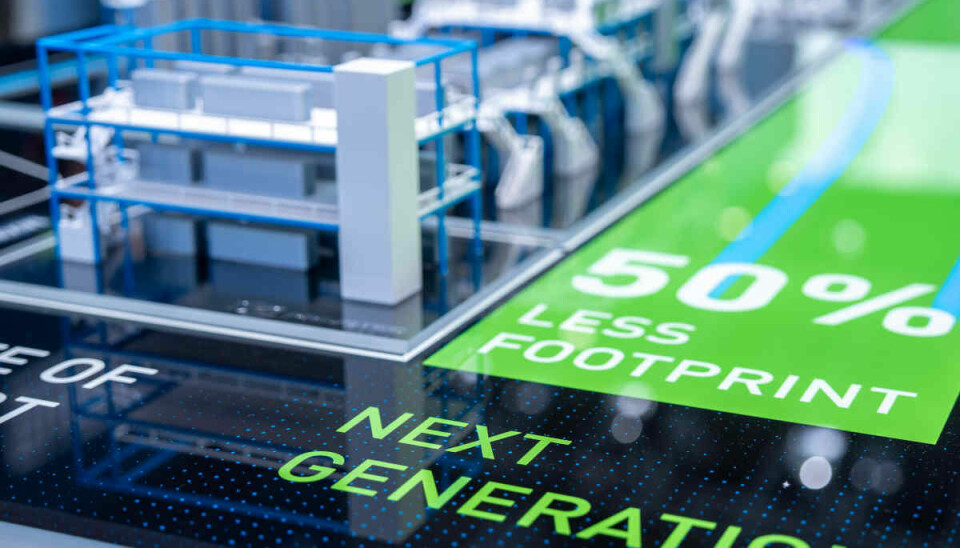Battery cell manufacturing
Grob and Dürr develop the battery factory of the future

More innovation on half the production area - this is what Grob and Dürr promise with their new concept for battery cell manufacturing. These are the technologies making it possible.
Grob and Dürr want to establish themselves together as system providers of battery production plants in Europe and North America. To this end, the two companies have been cooperating since 2022 in the field of production technology for lithium-ion batteries. Now they have presented their new concept factory for battery cell production.
"With our expanded portfolio of highly available machines and systems, we jointly cover almost the entire value chain for battery cell production with our own technologies," says German Wankmiller, CEO of the Grob Group.
In addition to a classic production layout with wet coating, the partners have developed a concept factory with dry coating and the new Z-Folder technology: "Our concept factory and especially the dry coating represent the next generation of battery cell production. Thanks to powerful and innovative technologies, production requires 50 percent less space and energy. This means significantly higher space efficiency and lower operating costs for our customers," explains Dr. Jochen Weyrauch, CEO of Dürr AG.
Dry coating is more efficient and sustainable
Instead of the conventional slurry, a dry-mixed active material is used in the activated dry electrode process. This powder mixture is pressed into a free-standing film with calendering machines, which is then laminated on both sides onto the collector foil.
Compared to wet coating, the drying process and the recovery and processing of solvents are eliminated. This saves space, energy, and costs.
The freestanding film also has advantages in terms of material efficiency, as excess film material can be fully returned to the production process before laminating onto the collector foil. After calendaring, the area weight can be measured directly, allowing for better control of the coating thickness.
During the subsequent lamination onto the collector foil, less force is required than during calendaring in the wet coating process, so there is no deformation of the foil, which improves processability for downstream notching and stacking.
High-speed cell assembly
With the new generation of the Z-folder, which integrates the notching process, Grob achieves higher performance with a smaller footprint. For particularly stable and reliable plant technology, the separator is guided with very uniform and low web tension over a few deflection rollers. Through high-quality electrode magazine technology, the plant achieves an availability of 95 percent.

Precise electrolyte filling with high pressure
With a process developed by Dürr, battery cells can be filled in just one step without residual gas. Unlike the conventional process, the electrolyte is filled directly into the cells with up to 30 bar. The filling pressure is thus two to three times higher than the current industry standard. The process design enables precise dosing and shortens the filling process as well as the subsequent penetration of the electrolyte into the active material.
Digital twin increases plant effectiveness
The plant technology from Dürr and Grob is complemented by a continuous digital representation of the production process. Already in the planning phase before production starts, a digital twin enables the simulation of the entire factory and accelerates implementation on site.
Rockwell top manager on the advantages of digital twins
The data from the simulation flows into the MES/MOM software of Dürr's subsidiary iTAC, which allows all production steps in battery manufacturing to be controlled and planned. Important functions include traceability and quality analysis to avoid errors in production. In total, this achieves production with high overall plant effectiveness.
Wet coating has also been optimized
In the classic wet coating process, Dürr has further optimized its technologies in terms of performance and energy efficiency. An example is the automation of the coater and slot nozzles, which form a closed control loop for the coating thickness, leading to faster production start-up and reduced waste.
In the subsequent drying process, battery manufacturers can achieve a 50 percent faster web speed with laser dryers and dry particularly energy-efficiently. After drying, the electrode coating is compacted with calendering machines.
The machines of Dürr's subsidiary Ingecal work particularly precisely with dynamic gap control: two sensors measure the distance between the two rollers to an accuracy of 0.5 micrometers. This results in a very uniform coating thickness, with no more force applied than necessary. The calenders from Dürr Ingecal are used for compacting the film in both wet and dry coating.
Source: Grob-Werke